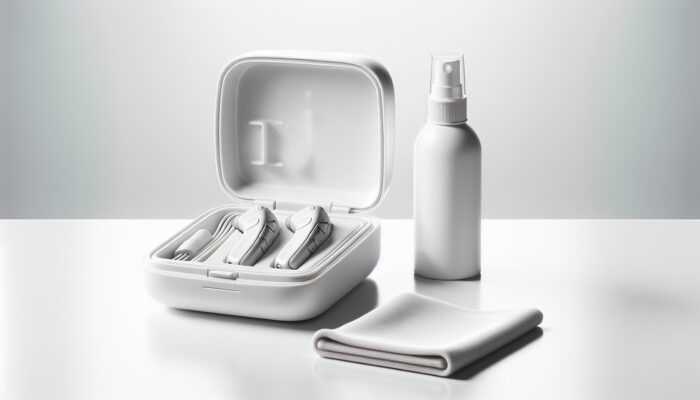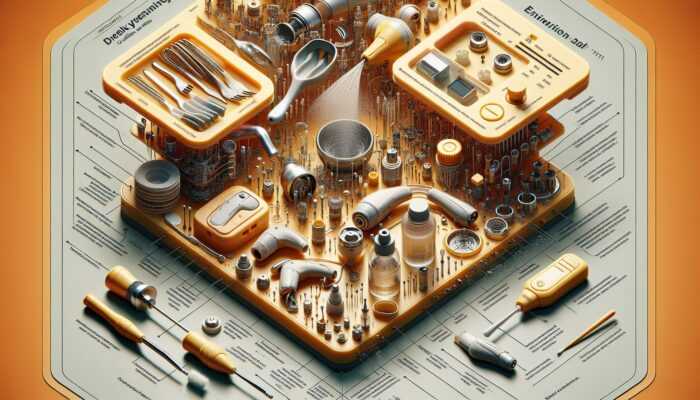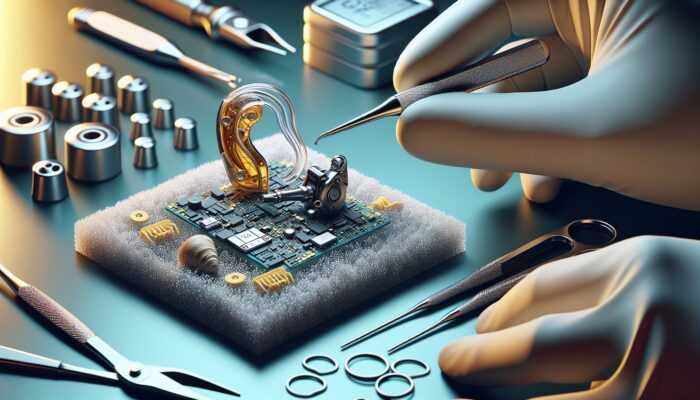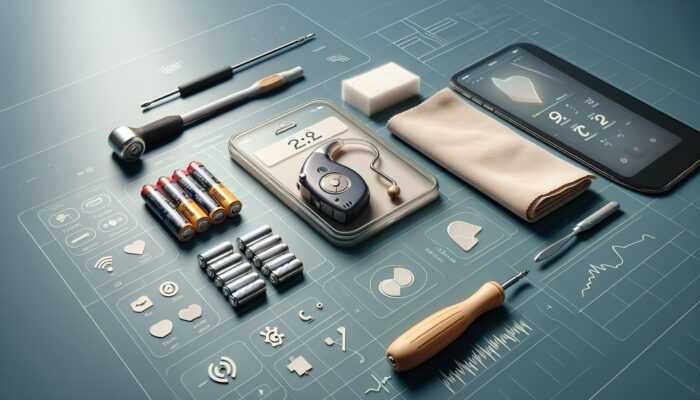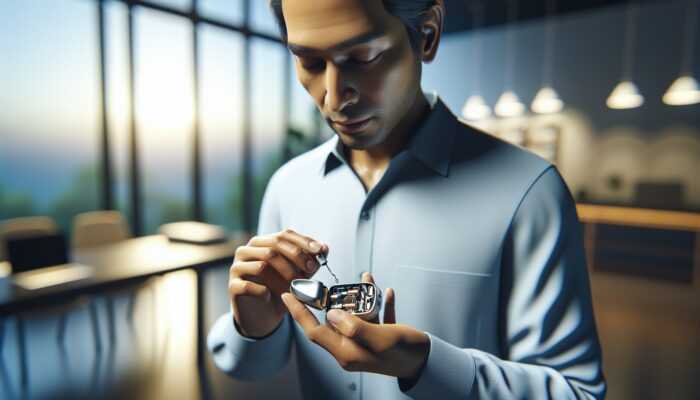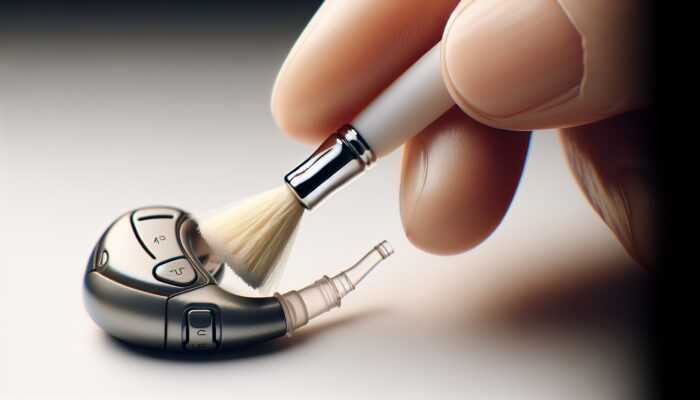Last Updated on 15/10/2025 by Admin
Understanding the Critical Role of Early Detection in Hearing Health
What Are the Key Indicators of Hearing Loss to Watch For?
Recognizing the key indicators of hearing loss at an early stage is vital for ensuring effective intervention and management. Many people may not immediately notice that they are experiencing hearing difficulties, but specific signs can indicate the necessity for a comprehensive hearing evaluation. Common indicators include difficulty understanding speech in noisy environments, increased volume on electronic devices, and social withdrawal from interactions, which strongly suggest the need for a thorough hearing assessment. Other important signs to monitor include:
- Frequently asking others to repeat themselves
- Struggling to hear during phone calls
- Feeling that people are mumbling
- Difficulty hearing high-pitched sounds
- Perceiving conversations as too quiet
- Experiencing fatigue from listening efforts
These symptoms are often overlooked or dismissed, allowing hearing loss to worsen without timely intervention. Therefore, actively monitoring these signs is essential as early detection can significantly prevent further deterioration of hearing abilities.
How Can Early Detection of Hearing Loss Enhance Your Life?
Detecting hearing loss at an early stage can greatly enhance an individual’s overall quality of life. Addressing hearing issues sooner rather than later helps to avert complications such as cognitive decline, which can occur when untreated hearing loss leads to challenges in processing information and maintaining mental sharpness. Additionally, improving communication skills through early intervention can strengthen relationships and diminish feelings of isolation.
When hearing problems are identified early on, individuals can access appropriate treatment options—such as hearing aids or therapeutic interventions—that enable them to fully engage in their daily lives. This proactive approach not only bolsters social interactions but also contributes positively to mental health. People who actively manage their hearing health tend to experience enhanced overall well-being and happiness.
Why Is Regular Hearing Testing Essential for Prevention?
Regular hearing tests are crucial in identifying potential issues before they escalate into more serious problems. Routine screenings allow audiologists to detect subtle changes in auditory capabilities that may not be immediately noticeable to the individual. By establishing a baseline through initial testing, healthcare professionals can monitor changes over time, facilitating timely interventions. This proactive approach is key to preventing further damage and ensuring optimal hearing health outcomes.
Regular testing is particularly important for individuals at higher risk, including those who are frequently exposed to loud noises or have a family history of hearing loss. Implementing a routine schedule for hearing tests ensures that any changes in auditory health can be promptly addressed, ultimately leading to a more fulfilling life. Committing to regular check-ups promotes a culture of preventive care in hearing health.
When Is It Crucial to Seek Professional Help for Hearing Issues?
It is critical to seek professional help as soon as you notice persistent hearing difficulties. If individuals find themselves struggling to hear in noisy environments or during conversations, it is essential to consult with a healthcare provider or audiologist. Early consultation can enable timely diagnosis and appropriate treatment, preventing further deterioration of hearing abilities.
It is advisable to schedule an appointment if you notice any of the signs mentioned, especially if they interfere with daily activities or social interactions. Audiologists recommend that adults undergo hearing tests at least every one to three years, depending on factors like age and risk factors. Taking these proactive steps can significantly lead to better auditory health and an enhanced quality of life.
Insights from Experts on the Significance of Regular Hearing Tests
What Do Audiology Experts Say About the Necessity of Hearing Tests?
Experts in the field of audiology consistently stress the importance of regular hearing tests in maintaining optimal auditory health. Numerous studies indicate that individuals who undergo routine screenings are more likely to identify hearing issues before they escalate into severe conditions. Successful early detection has been documented in various real-world scenarios. For example, a person experiencing mild hearing loss may not recognize it, yet could encounter profound difficulties within a few years if not tested regularly.
Professionals advocate for community awareness initiatives to highlight the importance of hearing health. They emphasize that integrating hearing tests into regular health check-ups can substantially improve early detection rates. A concerted effort to promote hearing screenings can lead to healthier communities, where individuals are empowered to take charge of their auditory health.
How Frequently Should You Schedule Hearing Tests?
Experts recommend that adults undergo hearing tests every one to three years to maintain optimal auditory health, with more frequent testing advised for individuals with known risk factors. Regular check-ups are essential for detecting changes over time, and individuals should take proactive steps to schedule these assessments accordingly. Consider marking your calendar for testing appointments or setting reminders to ensure you remain on track.
If you have a family history of hearing loss, work in environments with high noise levels, or experience any symptoms related to hearing issues, it is advisable to consult with an audiologist for a personalized testing schedule. Establishing a routine for hearing assessments can pave the way for significant long-term health benefits.
What Are the Consequences of Untreated Hearing Loss?
Failing to address hearing loss can lead to significant long-term repercussions, such as social isolation, depression, and cognitive decline. The inability to engage in conversations or fully participate in social situations can result in individuals withdrawing, adversely affecting their mental health and overall well-being. Research indicates that those with untreated hearing loss are at a heightened risk of developing memory issues and cognitive impairment over time.
Experts emphasize the necessity of addressing hearing loss early, as untreated conditions can exacerbate existing health issues and diminish overall quality of life. Engaging with audiologists and healthcare professionals can significantly reduce these risks, fostering a supportive environment that encourages proactive measures for hearing health.
Innovations in Hearing Test Technologies
What Are the Most Recent Innovations in Hearing Testing Technologies?
Recent advancements in hearing test technologies have made these assessments more precise and efficient. Techniques such as otoacoustic emissions tests and pure tone audiometry offer valuable insights into an individual’s auditory capabilities. Other notable innovations include:
- Auditory Brainstem Response (ABR)
- Speech Audiometry
- Tympanometry
- Middle Ear Analysis
- Portable Audiometers
These innovations not only enhance the accuracy of diagnoses but also enable audiologists to customize treatments more effectively to meet individual needs. As a result, patients benefit from quicker, more comfortable assessments that lead to timely interventions.
How Have Innovations in Testing Technologies Improved Patient Experience?
Technological advancements have made hearing tests more accurate, quicker, and less invasive, significantly improving patient comfort and outcomes. For example, innovations in otoacoustic emissions testing allow for an objective evaluation of cochlear function, providing audiologists with crucial data without requiring extensive patient involvement.
Moreover, the introduction of computer-assisted diagnostic tools has streamlined the testing process, enabling audiologists to interpret results more efficiently and accurately. This not only saves time but also contributes to a better patient experience, alleviating anxiety and enhancing overall satisfaction with the testing process.
What Does the Future Hold for Hearing Test Technology?
The future of hearing test technology presents exciting possibilities. Emerging trends indicate that artificial intelligence (AI)-driven diagnostics could soon revolutionize how hearing assessments are conducted. AI has the capacity to analyze vast amounts of data rapidly, identifying patterns that may not be immediately apparent to human evaluators.
Furthermore, the development of home testing kits may soon enable individuals to monitor their hearing health conveniently. This advancement would provide greater accessibility to hearing assessments, particularly for those in remote areas or individuals facing mobility challenges. As these technologies evolve, they will likely make routine hearing tests more accessible and less intimidating, further encouraging early detection and intervention.
Enhancing Quality of Life Through Hearing Tests
What Social Advantages Come with Good Hearing?
Good hearing is foundational for effective communication and meaningful social interactions. Individuals with healthy hearing are more likely to engage in conversations, partake in group activities, and maintain strong relationships with family and friends. This social connectivity is vital for emotional well-being and can mitigate feelings of isolation that often accompany hearing loss.
The advantages of good hearing extend beyond social interactions. Enhanced communication skills can improve teamwork in professional environments, resulting in better job performance and increased career satisfaction. By prioritizing regular hearing tests, individuals can ensure that their auditory health supports both their social and professional lives.
How Does Hearing Health Impact Mental Wellness?
The connection between hearing health and mental well-being is profound. Individuals with good hearing capabilities are less likely to experience symptoms of depression and anxiety, as they can fully engage in their social circles. Active participation in conversations and interactions significantly boosts mood and mental health, contributing to a more positive outlook on life.
Moreover, addressing hearing loss through early detection and treatment can lead to improved self-esteem. Individuals who manage their hearing health often report feeling more confident in social situations, fostering connections that enhance their overall mental health. Prioritizing hearing health is crucial for achieving comprehensive well-being.
How Improved Hearing Can Transform Professional and Personal Lives
Better hearing can dramatically enhance both professional performance and personal relationships. In the workplace, clear communication fosters collaboration and productivity, while in personal relationships, effective listening helps build trust and intimacy. Individuals with robust auditory health often find themselves more involved and fulfilled in both aspects of life.
Additionally, educational outcomes can benefit significantly from good hearing. Students who can hear well are more likely to actively participate in classroom discussions and absorb information effectively. This engagement translates into improved academic performance, paving the way for future opportunities. Investing in hearing health through regular testing is essential for nurturing both personal and professional growth.
Research-Backed Benefits of Regular Hearing Testing
What Does Recent Research Reveal About Hearing Tests?
Research consistently demonstrates that regular hearing tests play a vital role in maintaining cognitive health and overall quality of life. Studies indicate that individuals who undergo routine assessments are less likely to experience cognitive decline over time. Key findings include:
- Early detection significantly slows cognitive decline
- Regular testing correlates with improved mental health outcomes
- Interventions for hearing loss lead to better social engagement
- Untreated hearing loss increases the risk of dementia
This body of evidence underscores the necessity of prioritizing hearing health as an integral part of comprehensive healthcare. Regular testing can serve as a preventive measure against numerous health issues, enhancing life quality across the board.
How Does Consistent Testing Influence Cognitive Health?
Regular hearing testing is essential for identifying issues that, if left untreated, may contribute to cognitive decline. Studies suggest that hearing loss can strain cognitive resources, leading to heightened risks of memory problems and confusion. By prioritizing consistent assessments, individuals can detect and address hearing loss early, reducing cognitive workload and preserving mental function.
Additionally, maintaining auditory health encourages social engagement, which is crucial for cognitive vitality. Individuals who actively participate in conversations and social activities are more likely to preserve their cognitive abilities, fostering a vibrant and engaged life. Taking actionable steps toward regular testing can empower individuals to safeguard their cognitive health.
What Are the Long-Term Advantages of Regular Testing?
Consistent hearing testing yields significant long-term benefits, including improved hearing health outcomes and the prevention of more severe issues in the future. Regular evaluations allow audiologists to track changes and intervene promptly, leading to enhanced hearing capabilities and overall well-being.
Moreover, maintaining a schedule of routine tests can reduce healthcare costs associated with untreated hearing loss and its complications. By investing in auditory health through consistent testing, individuals can enjoy a higher quality of life and enhanced longevity. The commitment to regular assessments builds a foundation for healthier living, allowing individuals to engage fully in all aspects of life.
Who Should Prioritize Regular Hearing Testing?
Are Hearing Tests Important for Individuals of All Ages?
Hearing tests are essential for individuals of all ages, particularly those exposed to loud environments or with a family history of hearing loss. Children, adults, and seniors can all benefit from regular assessments, as hearing issues can arise at any stage of life. Early detection in children is especially critical for language development, while adults and seniors should prioritize testing as they age.
Implementing a routine for hearing tests from early adulthood onward can foster good auditory health practices, ensuring that individuals remain vigilant about their hearing needs. Regular evaluations are beneficial not only for those at risk but for everyone, as they establish a proactive approach to health management.
What Are the Major Risk Factors for Hearing Loss?
Several risk factors contribute to hearing loss, making it vital for individuals to be aware of their personal health profiles. Common risk factors include:
- Age
- Exposure to loud noises
- Genetics
- Certain medications
- Chronic ear infections
- Health conditions such as diabetes
Understanding these risk factors is essential for both prevention and early intervention. Individuals with one or more risk factors should prioritize regular hearing assessments to safeguard their auditory health.
How to Encourage Family Members to Prioritize Hearing Tests?
Encouraging family members to value hearing health can sometimes be challenging but is ultimately very important. Open conversations about the significance of hearing tests can create a supportive environment where discussing hearing health becomes normalized. Sharing personal experiences, whether positive or negative, can further motivate family members to seek assessments.
Consider scheduling family appointments or making a fun event out of the testing process—these strategies can help alleviate any anxiety associated with hearing tests. Emphasizing the benefits of good hearing and how it enriches life can inspire family members to take proactive steps toward maintaining their hearing health.
When Should You Begin Regular Hearing Testing?
Regular hearing tests should ideally commence in early adulthood, especially for individuals with higher risk factors such as exposure to loud environments or a family history of hearing loss. Establishing a routine for annual check-ups can significantly enhance auditory health outcomes over time.
As individuals age, the frequency of testing should be adjusted based on personal health and risk factors. Regular evaluations can detect changes early, leading to timely interventions and improved long-term health prospects. Taking early action is crucial for fostering a lifetime of healthy hearing.
Enhancing Accessibility to Hearing Testing
What Factors Contribute to the Accessibility of Hearing Tests?
Hearing tests are accessible through various avenues, including healthcare providers, audiologists, and, in some cases, even at workplaces or schools. Many organizations recognize the importance of auditory health and offer testing services as part of employee wellness programs.
Telehealth services are also becoming increasingly prevalent, allowing individuals to access hearing assessments conveniently from their homes. This growing accessibility ensures that people can prioritize their auditory health without facing significant barriers, fostering a culture of preventive care.
How Can You Locate a Hearing Test Provider Near You?
Finding a nearby hearing test provider can be as straightforward as contacting local healthcare professionals or audiology clinics. Utilize online resources and directories to pinpoint services in your area. Many providers offer online booking options, making it convenient to schedule appointments.
Consider reaching out to community health organizations or local hospitals that may provide hearing assessments as part of their services. Taking these actionable steps can ensure that individuals remain proactive about their hearing health.
Why Is Affordable Testing Essential for Public Health?
Affordable testing is crucial for ensuring that more people can access the care they need, promoting better hearing health across all demographics. Many healthcare providers offer sliding scale fees or accept insurance to alleviate the financial burdens associated with hearing assessments.
Communities with accessible hearing health resources can significantly improve auditory health outcomes, reducing the prevalence of untreated hearing loss. Advocating for affordable testing options can empower individuals to prioritize their hearing health without financial constraints.
Frequently Asked Questions
How often should I schedule my hearing tests?
Regular hearing tests are recommended every one to three years for adults, depending on personal risk factors and age. Those with a family history of hearing loss should consider more frequent assessments.
What are the common indicators of hearing loss?
Common indicators include difficulty understanding speech, frequently asking for repetitions, increasing the volume on devices, and social withdrawal. These signs should prompt a consultation with a healthcare provider.
Are hearing tests painful or uncomfortable?
No, hearing tests are generally quick and non-invasive. Most individuals find them to be simple assessments that provide valuable insights into their auditory health.
Can children receive hearing tests?
Yes, hearing tests are vital for children, especially those who may be experiencing hearing loss. Early detection is crucial for proper speech and language development.
What occurs if hearing loss is detected during testing?
If hearing loss is identified, audiologists will recommend appropriate treatments, such as hearing aids or therapy, to help manage the condition and improve quality of life.
Can lifestyle choices influence hearing health?
Yes, lifestyle choices such as exposure to loud noises, smoking, and poor diet can impact hearing health. Taking proactive measures can help preserve auditory function.
Do hearing aids enhance hearing abilities?
Yes, hearing aids can significantly improve hearing capabilities for individuals experiencing hearing loss, enhancing their ability to engage in conversations and enjoy life more fully.
Are there home testing options available for hearing?
While some home testing options are emerging, it is crucial to consult a healthcare provider for comprehensive evaluations. Home tests should not replace professional assessments.
What is the average cost of a hearing test?
The cost of a hearing test can vary widely depending on location and provider, but many insurance plans cover part or all of the cost. It’s advisable to check with your insurance provider.
How does untreated hearing loss impact quality of life?
Untreated hearing loss can lead to social isolation, depression, and cognitive decline, significantly affecting overall quality of life. Regular testing can help prevent these adverse effects.
Discover more about our offerings on X!
The post Regular Hearing Tests: Essential for Everyone’s Health appeared first on The Microsuction Ear Wax Removal Network.






